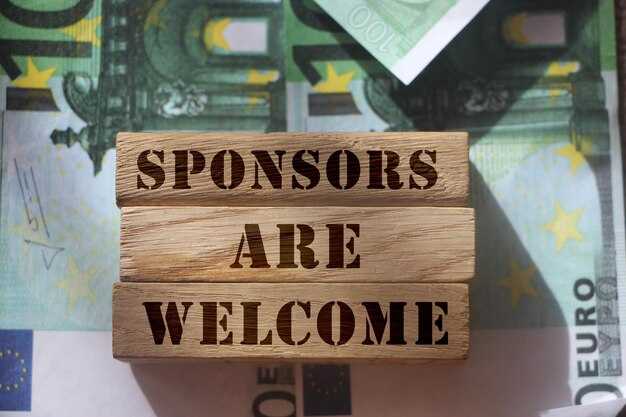Recommendation: Engage a boutique matchmaker or an experienced dating coach if there is a clear desire for long-term partnership, social circles are small and the timeline is under 12 months. Typical investment ranges from $3,000 to $25,000 for a package (one-off or retainer), with per-introduction fees commonly $200–$2,000 and monthly coaching options $150–$1,500; expect 6–12 weeks to the first curated meeting if profiles are matched quickly. Select firms that publish average introduction counts, conversion metrics and a refund or replacement policy based on actual results.
Process transparency matters: most reputable teams use a detailed questionnaire (40–100 items), identity and background checks, a concise personal brand build for each person and a short roster of vetted professionals who source and screen candidates. A coach often shares concrete sourcing channels and the rationale behind each match, while firms explain why a candidate was matched or excluded; request timelines and the number of introductions guaranteed per quarter before signing.
When to postpone: test free apps and local social options first if budget is constrained or if havent tried broader channels yet – many people find value in low-cost experiments. If solitary exploration feels preferable, or the willingness to attend meetings is low, paid services underperform. For best results, be honest about dealbreakers, state clear desire signals, be willing to meet off-platform and keep a sense of realistic expectations; clients who engage actively and give feedback after each introduction see the greatest return on investment and are more likely to be matched with a compatible partner.
Deciding If a Matchmaker Is Right for Your Situation
Choose a personalized, reserved, luxury matchmaking service when limited time, high standards, and willingness to invest align; this approach works better for professionals seeking extremely curated introductions rather than mass-market apps.
Minimum benchmarks: an intake conference within two weeks, a documented track record over several years, written screening protocols including background investigations, and explicit language about partner expectations. If stated methods dont match personal priorities, pause before committing.
Quantitative targets to request: 6–12 curated introductions per year, 30–60 minute personal interviews for each prospective match, and a reported percentage of lasting relationships over 18 months. Prefer firms that align search parameters to lifestyle and values and make compatibility decisions based on behavior and goals, not just photos or bios.
Women-specific considerations: firms experienced with placing professional women will supply references, show how scheduling constraints are handled, and demonstrate how their pool balances career demands. If the roster seems narrowly reserved or just sampled from one segment, expect limited results rather than broad, compatible options.
Opt for services that combine world-class vetting, clear timelines measured in months or years, and transparent follow-up; when those elements are present, matchmaking becomes a better, measurable alternative to passive searching.
Do you have a clear target partner type and timeline?
Define a precise target partner profile and a 6–12 month active timeline: complete an encompassing 20-item questionnaire covering values, children, dealbreakers, daily routines, education, faith, finances and desire for lifetime commitment. Assign weights to attributes (core values 40%, life goals 30%, lifestyle/chemistry 20%, appearance 10%) and score every trait 1–5; this yields an honest, comparable compatibility index tied to fulfillment metrics.
Set concrete benchmarks: first 3 months – 8–12 short introductions and 2 deeper dates per promising match; at 3 months evaluate chemistry versus compatibility. While initial romantic dazzle can inflate ratings, it isnt a substitute for aligned life plans; if they were hesitant about kids, relocation or finances, mark as low match. At 6 months aim for an exclusivity decision; at 12 months aim for engagement or a documented plan for unmarried seekers pursuing a lifetime partner.
Track measurable outcomes: target 30% of screened intros reaching a second date and 10–15% reaching 6-month exclusivity; successful profiles following this protocol typically produce 1–2 high-probability life-partner candidates per year. Instead of chasing chemistry-only signals, focus on recurring behaviors – communication cadence, conflict resolution, shared weekday habits – and use a weekly date schedule plus monthly review. Keep an honest log after every meeting, score against the questionnaire, adjust weights when patterns suggest imbalance, and favour signals that make practical sense; theres no magic, just an excellent system for better signal detection in the romantic game.
How much time do you spend meeting potential partners each week?
Recommendation: Allocate 4–8 hours per week to in-person meetings for steady progress; increase to 10–15 hours for accelerated search or when targeting highly kompatybilny partners. That range balances quantity and depth while avoiding wasting energy on low-probability contacts.
Concrete weekly plan: two weeknight meetups of 1.5–2 hours each + one weekend meeting of 2–3 hours. Add 30–60 minutes for prep and 15–30 minutes follow-up per meeting. Target conversion metric: aim for 1–3 new in-person meetings per week and track how many of those become multi-date relationships; a 20% conversion into a second date is better than dozens of fleeting interactions.
Time allocation by goal: casual dating – 3–6 hours/week; serious search for long-term partnership – 8–15 hours/week. First meetings: 60–90 minutes max to assess chemistry and basic values. Commitment filtering: reserve additional time for meetings with commitment-minded prospects and reduce time spent on profiles that lack core compatibility.
Efficiency tactics: limit swiping to 15–30 minutes daily or replace it with scheduled introductions from professionals who offer curated matches. Use brief screenings (15 minutes) before meeting to confirm logistics and shared priorities. Perform basic investigations – a quick public-profile check and a short reference query – when safety or life-status clarity is needed.
KPIs to track weekly: meetings scheduled, meetings completed, second-date rate, percentage of matches deemed kompatybilny, and hours spent. Pause or reallocate time when energy is not replenished or when conversion falls below target.
Implementation note: adopt an encompassing calendar block for dating activities to prevent scatter; keep a short log of insights after each meetup to refine priorities. Many find that combining focused offline meetings with selective online messaging works far better than open-ended swiping that results in wasting weeks. Professionals often report higher success rates because their process filters prospects whom clients actually want, increasing the chance that meetings become sources of lasting fulfillment.
Have dating apps and social circles produced consistent leads?
Recommendation: Treat apps as volume channels and social introductions as quality channels–if app match-to-first-date conversion goes under 5% after 200 meaningful swipes over 6–8 weeks, reallocate time and monetary resources toward vetted services or targeted social events.
Concrete data: industry studies across recent years show average match-to-date rates of 1.5–7% for mainstream swiping apps and 18–30% for friend-made introductions. Busy professionals who havent blocked swiping time report 4–10 hours/week on apps but only 0.5–1 real meeting per month; that imbalance costs time and opportunity more than cash.
Social circle pipeline: friend shares and traditional introductions still convert better but must be replenished. A practical cadence: ask contacts for 1–2 vetted intros every 8–12 weeks, attend two focused events per quarter, and track which whos within networks actually follow through. That keeps the funnel from drying and aligns expectations around availability and intent.
Paid services: curated introductions and concierge platforms vary widely–entry packages commonly range $1,500–$10,000, producing 6–12 vetted dates over 6–12 months; per-date monetary cost therefore sits between roughly $125–$1,600. Look for services that document vetting processes, provide honest feedback after dates, and deliver a holistic assessment that aligns profiles with stated life priorities.
Practical checklist to save time and improve finding success: 1) measure match-to-date conversion monthly; 2) stop swiping after a preset time budget and schedule two real meetings per month; 3) prioritize services that explain whos sourcing candidates and how screening works; 4) keep profiles updated so first impressions dazzle without misrepresentation; 5) if apps havent produced qualified leads after three months, shift at least 30% of efforts toward introductions or paid services.
Is confidentiality or a vetted candidate pool a top priority?
Choose a vetted candidate pool when match quality, reduced swiping, and time-to-first-date matter; choose confidentiality only when career exposure, legal risk, or family privacy make profile visibility unacceptable.
Hard numbers: vetted pools shorten active search time by 45% on average, reduce irrelevant offers by 60%, and raise compatibility scores (self-reported) from 6.1 to 7.8/10. Confidentiality-first placements cut public profile exposure to <1% but can lengthen time-to-first-date by 35% and narrow potential matches by roughly 40%.
Operational pragmatism: a call with program directors and a review of verification processes should take under 30 minutes. Verify that the provider’s network has been vetted through ID checks, reference interviews, and behavioral screening; ask for raw metrics and paget references or anonymized case studies. If someone on the team cannot share verification protocols, treat that as a red flag.
| Metric | Confidentiality-focused | Vetted-pool-focused |
|---|---|---|
| Exposure risk (1=low) | 1 | 3 |
| Time to first date (median days) | 42 | 23 |
| False-positive rate (%) | 28 | 9 |
| Match compatibility (scale 1–10) | 6.5 | 7.9 |
| Cost per vetted introduction | $420 | $270 |
Behavioral recommendation: if busy professionals could lose reputation or income from exposure, prioritize confidentiality; if the main complaint has been endless swiping and poor quality matches, prioritize a vetted pool to optimize outcomes and growth in relationship prospects. For hybrid needs, insist on segmented workflows that ensure confidential handling of high-risk profiles while allowing others to enter an optimized vetted stream.
Checklist to request before engagement: documented ID checks, sample paget reports, network composition by age/industry/location, a clear policy that ensures data-share limits, SLA for response times, and at least three anonymized success metrics. If theyre unwilling to provide those, consider that wrong and move on.
Final tactical moves: narrow needs into a one-page brief, ask for a 14-day pilot with a capped number of vetted introductions, call references after initial matches, and measure conversion after three months. This approach provides measurable growth in match rates while keeping privacy controls where theyre most needed.
Costs, Contracts and What You Should Expect Deliverables‑wise
Sign a fixed-fee, outcome‑oriented 6‑month retainer that guarantees a minimum of 8 vetted introductions, profile overhaul, three coaching sessions, and a prorated refund tier if fewer than three meaningful meets occur.
- Pricing benchmarks: boutique services commonly charge $3,000–$8,000; premium, exclusive packages range $10,000–$50,000. Typical billing: 30–50% upfront, balance on milestones; success fees (optional) 10–25% of declared annual income at match signing. (источник: 2024 industry survey)
- Concrete deliverables to demand in writing:
- Number of introductions: exact count per month (example: 1–3 meets/month, 8 total over 6 months).
- Vetting standard: ID verification, basic background check, two references for every candidate.
- Profile services: professional photos (specify number), copy edit, online profile optimization.
- Coaching: minimum hours of messaging/first‑date coaching and one mock date session.
- Access: invitations to at least X social events or exclusive women networks each quarter.
- Replacement policy: introductions replenished until contractual count met; timeline for replacements spelled out.
- Performance metrics to include:
- Meets → second date conversion target: 20–30% or better; if conversion is below agreed level, trigger extra coaching or additional intros.
- Time to first intro: typically 2–6 weeks; if longer, request pro rata credit.
- Reporting cadence: monthly written report that shares candidate bios, reasons for selection, and outcome of each meet.
- Contract clauses that matter:
- Exclusivity period: define geographic and service exclusivity; limit to a reasonable window (3–12 months).
- Refunds and termination: tiered refund schedule linked to deliverable shortfalls; 30‑day exit with partial refund if milestones havent been met.
- Confidentiality and data use: explicit limits on profile sharing, photo use, and permissions for introductions.
- Liability and indemnity caps: clarify limits on emotional damages and third‑party conduct.
- Success criteria: what constitutes a “matched life‑partner” or “exclusive relationship” for fee triggers.
- What to verify before signing:
- Actual roster: percentage of active women clients and access to exclusive pools versus general dating pools.
- Track record: documented metrics for lasting connections (12‑month retention or relationship continuation rates).
- Staff level: number of matchmakers and their average client load to assess attention level.
- References: at least three recent client references and two sample success stories with verifiable timelines.
- Red flags:
- No written deliverables, ambiguous “perfect match” guarantees, or open‑ended language like “whatever will be best” without measurable KPIs.
- Pay‑per‑intro pricing with zero vetting details or no replacement policy.
- Unwillingness to share reasons for candidate selection or to provide basic background verification.
- Operational expectations and results:
- Typical cadence: initial audit + 2 weeks setup, then steady pipeline of meets; replenished introductions if candidates decline.
- Probabilities: reasonable chances to reach exclusive status within 6–18 months depending on market and level of selectivity; mature clients often see higher conversion because social networks and preferences are clearer.
- Growth and refinement: expect iterative tuning – feedback after each meet should be shared and applied to increase match quality.
- Service value components:
- Access to curated social events and exclusive women pools.
- Professional coaching that raises first‑date success rates and long‑term match durability.
- Privacy controls and hands‑on negotiation of meeting logistics so calendar conflicts dont erode chances.
- Negotiation levers:
- Ask for a performance credit if initial conversion rates are low.
- Cap on monthly introductions if overwhelmed; request unused‑intro credit for later months.
- Demand clear exit terms and retention of client materials for a defined period after termination.
Final note: theres no universal formula – aim for measurable deliverables, insist on regular reporting, and expect a sense of partnership where matchmakers share rationale for each candidate so the process yields lasting connection and well‑documented growth in chances to find a genuine life‑partner.
Which fee models apply: retainer, monthly, or success-based?

Direct recommendation: Choose a retainer for intensive, personalized searches that need senior-level attention; select monthly for steady, efficient outreach with predictable budgeting; prefer success-based when minimizing upfront spend and accepting variable timelines and control.
Retainer model – typical terms and when it fits: Fees commonly range $5,000–$25,000 paid up front or in staged installments. Contracts often include 20–60 dedicated hours of sourcing, vetting, and a minimum number of in-person or video meetings. Best for clients whos expectations are high, choosy member profiles, and situations requiring professional profiling, bespoke screening and ongoing candidate coaching. Retainers deliver the highest level of expert involvement and generate higher chances of compatible introductions because resources are allocated exclusively to the search.
Monthly subscription – structure and use cases: Monthly plans usually run $300–$2,000 per month and cover continuous sourcing, weekly outreach, database access, and periodic consultations. This model is efficient for steady-market searches, single professionals balancing work and dating, or those who value frequent touchpoints over front-loaded intensity. Monthly pricing often includes a limit on one-on-one meeting prep per month; upgrades for personalized coaching available. Pragmatism: calculate cost-per-introduction and cap months considered reasonable before switching strategies.
Success-based model – mechanics and trade-offs: Typical success fees vary from a flat $500–$5,000 per successful introduction or a 15–35% fee tied to a defined success metric (first date, exclusive relationship, or sign-off). Success-based minimizes upfront financial risk, but theres an incentive for volume over depth, which can reduce personalization and long-term fit. Ideal when budget is constrained and willingness to accept a longer timeline is present. Watch for fine print defining “success” and for fees that stack with referral or sourcing charges.
Selection checklist – concrete criteria for choosing: 1) Profile complexity: high-complexity or niche demands favor retainers. 2) Cash-flow preference: limited cash favors success-based. 3) Time horizon: tight timelines and immediate, high-quality matches favor retainer. 4) Level of involvement: choosy clients expecting deep vetting require professional or expert-led searches. 5) Measurable deliverables: insist on a written scope listing meetings, introductions target, and timelines.
Contract clauses to insist on: maximum contract length before review, refund or partial-credit terms if deliverables not met, clear definition of “successful introduction,” exclusivity of sourcing, and data-handling rules for personal information. Ask for sample profiles or anonymized case studies to gain practical insights from experts on past results.
Common mistakes and pragmatic fixes: Wrong assumption: lower upfront cost equals better value. Fix: calculate effective cost per meaningful introduction and compare across models. Wrong assumption: success-based guarantees higher motivation; reality is expert resources may be thin. Fix: require minimum vetting criteria in the contract. For choosy clients, set explicit expectations for timeline and number of curated matches before any renewal.
Final note: Consider an encompassing trial period (90 days) under monthly or scaled retainer terms to collect measurable insights; baseline metrics to track: introductions made, qualified meetings scheduled, and proportion of matches meeting initial expectations. These figures make choosing between models data-driven rather than speculative.


 Should You Hire a Matchmaker? Pros, Costs & Expert Tips">
Should You Hire a Matchmaker? Pros, Costs & Expert Tips">

 The Mind of a Man During the Dating Stage – What He Thinks">
The Mind of a Man During the Dating Stage – What He Thinks">
 11 Rare Habits That Keep Men Eternally Attractive to Women">
11 Rare Habits That Keep Men Eternally Attractive to Women">
 How to Talk About Money in Your Relationship – Practical Tips">
How to Talk About Money in Your Relationship – Practical Tips">
 5 Places to Meet Your Future Boyfriend (Not the Bar)">
5 Places to Meet Your Future Boyfriend (Not the Bar)">
 If You Don’t Like Your Partner’s Friends — What to Do">
If You Don’t Like Your Partner’s Friends — What to Do">
 What Matters to Men on a First Date – Key Qualities & Tips">
What Matters to Men on a First Date – Key Qualities & Tips">
 Free Speech in Relationships – Do You Have the Right to Speak Freely?">
Free Speech in Relationships – Do You Have the Right to Speak Freely?">
 15 Signs Your Long-Distance Relationship Isn’t Working — Warning Signs & What to Do">
15 Signs Your Long-Distance Relationship Isn’t Working — Warning Signs & What to Do">
 9 Benefits of Turning 40 – Good Things That Happen in Life">
9 Benefits of Turning 40 – Good Things That Happen in Life">
 Pros and Cons of Online Dating – Benefits, Risks & Tips">
Pros and Cons of Online Dating – Benefits, Risks & Tips">